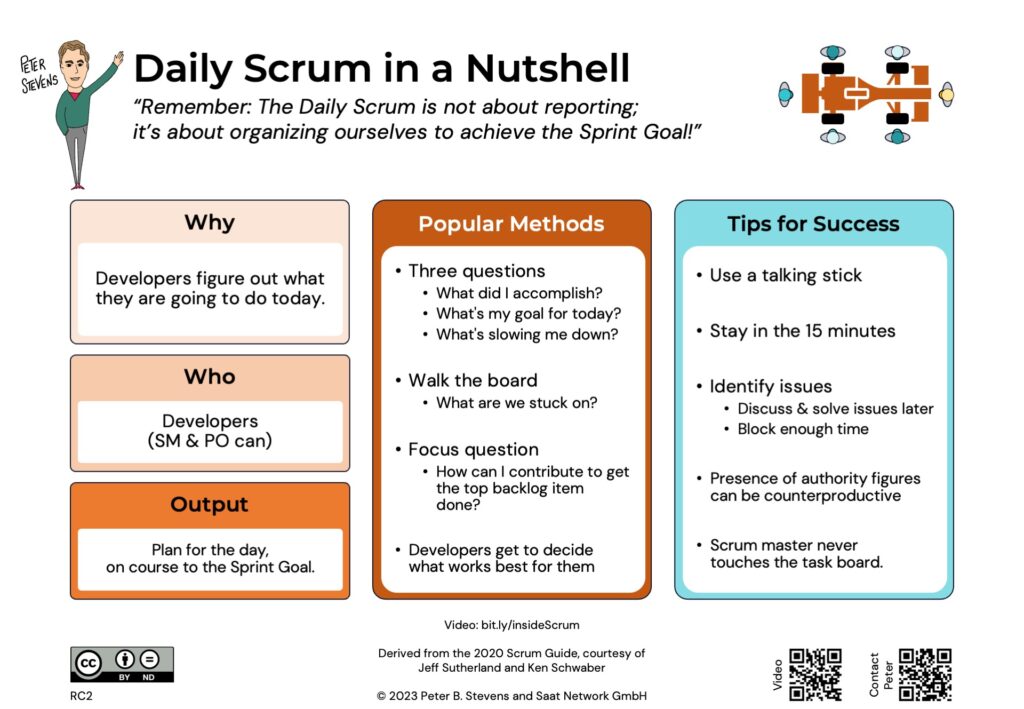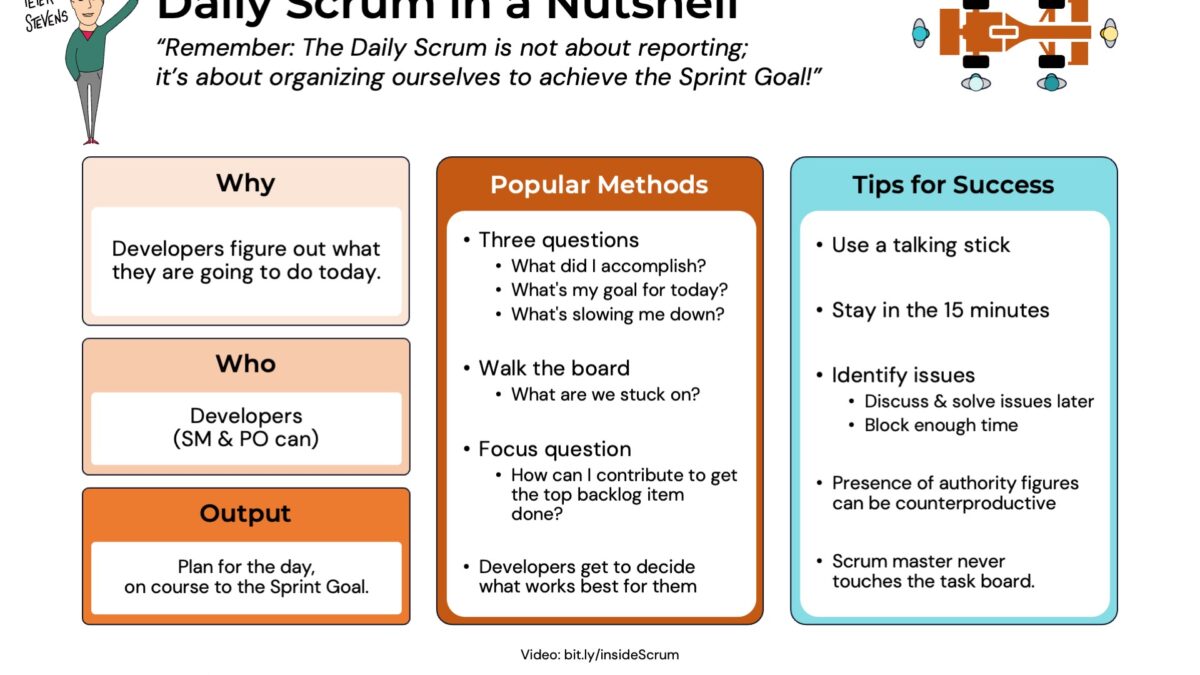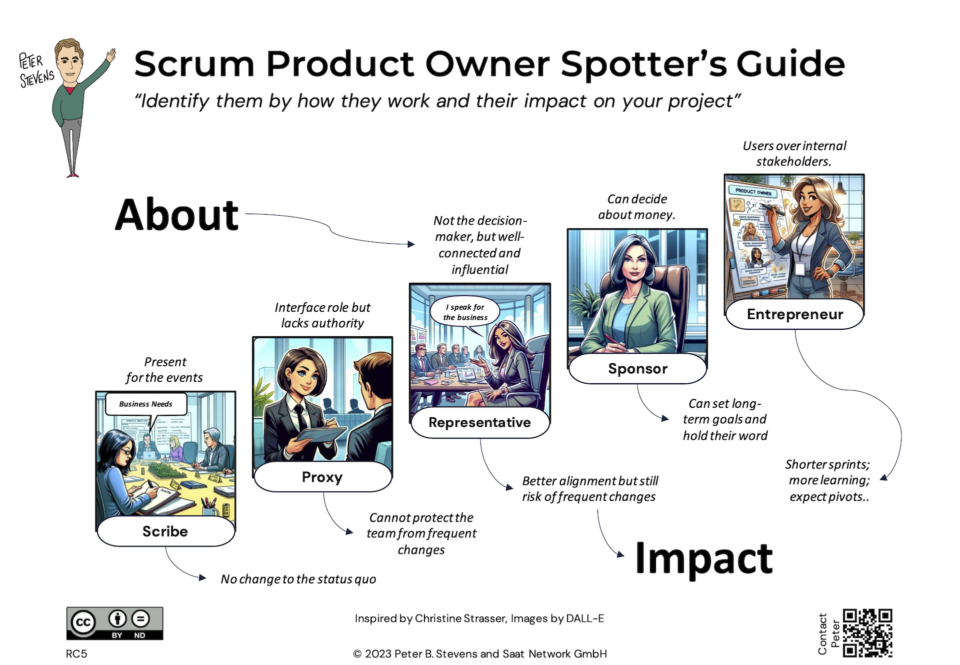
Fact-Driven Retrospectives (FDR)
13-12-2023
How is your company going to keep up with “Tesla Speed”?
15-12-2023Why do you do a Daily Scrum? If the answer is ‘to figure out what we are going to do today,’ you can skip this post! Otherwise, read on for some tips on bringing energy, focus, and purpose into your Daily Scrum.

“The purpose of the Daily Scrum is to inspect progress toward the Sprint Goal and adapt the Sprint Backlog as necessary, adjusting the upcoming planned work.”
Scrum Guide, 2020 edition
At least the 2020 Scrum Guide explains the purpose in the first sentence (unlike its predecessor), but that is all project-manager speak. What does this even mean? And what if we don’t have a Sprint Goal? (Yes, I know, but…)
In my eyes, the language puts too much emphasis on the plan but not enough on the work, collaboration, or getting things done.
Purpose of the Daily Scrum
Let’s keep it simple: The Purpose of the Daily Scrum is to figure out what we are going to do today.
The classic three questions – What did I accomplish? Why do I want to accomplish today? What’s slowing me down? – are not a bad place to start, but I would add a couple more to ask with the situation calls for it:
- Who can help me on this? (or Who wants to help me on this?)
- Can we talk about this right afterwards?
The first question is to invite collaboration on your task, and the second is to kick-off collaboration or discussion that exceeds the boundaries of the Daily Scrum.
Focus on getting things done
Another approach is to focus the conversation on the work. When you are standing in line to pay at the grocery store, the cashier only serves one customer at a time. Why? Better throughput, less confusion, and happier customers!
During a Formula-One pit-stop, the mechanics only service one car at a time. Why do they do that? To get cars back in the race sooner! What if a Scrum Team worked like that?
Some teams do work like that, and that is called “mobbing” or “mob programming.” The whole team works on the top item together until it is done. Those who have tried it report that it is surprisingly effective and fun.
Work as a team for better results
The Product Backlog is not just prioritized, it is sequenced: One item after the other. What if you considered the first item must-have, and everything else, nice-to-have? This suggests another set of questions:
- What can I do that will best help us achieve the Sprint Goal?
- What can I do to get the top backlog item finished?
- Who else can/wants to contribute to getting the top item finished? (Pass the talking stick to that person).
- Only if no one can contribute anything to the first item, do you consider the second item.
Notice how this approach helps, even if you don’t have a Sprint Goal.
When the first item is done, the second item becomes the must-have. You might do some work on the second or third items. But they stay nice-to-have until they get to the front of the line.
How does your team focus in the Daily Scrum? Follow me, feed the algorithm (👍 or share) or discuss on LinkedIn!





